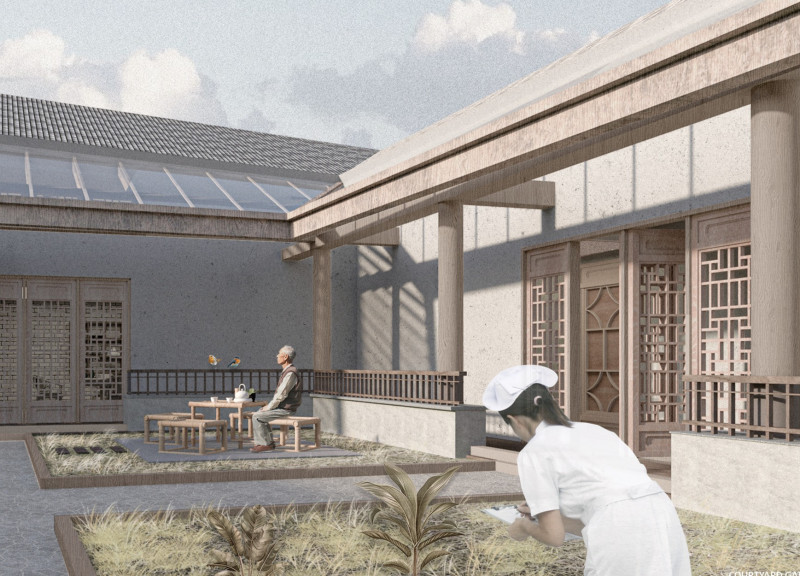5 key facts about this project
Spatial Configuration
The layout of the Herbal Medicine Hospice Center is structured around a central courtyard, providing both a gathering space and a connection to nature. Treatment rooms, patient accommodations, and social spaces are arranged to maximize natural light and views of the surrounding landscapes. This spatial organization supports a variety of activities while ensuring comfort and ease of movement for patients, staff, and visitors.
The incorporation of healing gardens is a defining aspect of the project. These gardens serve both therapeutic and educational purposes, allowing patients to cultivate and learn about medicinal plants. The design emphasizes accessibility across all areas, ensuring that patients can engage with nature as part of their healing process.
Materiality and Sustainability
The use of local and sustainable materials is a key feature, enhancing both aesthetic appeal and environmental performance. Bricks are employed for their thermal mass, helping regulate indoor temperatures, while timber is utilized for structural and finishing elements, creating warmth and a connection to the natural environment. Large glass elements allow natural light to penetrate deep into the interior spaces, further linking the building with its outdoor surroundings.
Natural ventilation systems are integrated into the design to promote airflow and reduce reliance on mechanical cooling. This eco-friendly approach aligns with the principles of sustainability and addresses the building's operational efficiency.
Innovative Design Features
Distinct from typical hospice designs, the Herbal Medicine Hospice Center emphasizes a dual approach to healing—combining clinical practices with a focus on wellness and environmental integration. The architectural design reflects traditional influences, such as sloping roofs and wooden latticework, while addressing contemporary healthcare needs. This blend results in an environment that encourages therapeutic interactions between patients and caregivers.
Flexible spaces are another critical component of this project. The design incorporates areas that can adapt to varying uses, from individual therapy sessions to group activities. This versatility contributes to the overall goal of enhancing patient experiences and fostering community connections.
In summary, the Herbal Medicine Hospice Center presents a unique architectural solution that balances healing environments with modern healthcare requirements. The project successfully integrates nature, innovative design practices, and traditional medicinal philosophies. For further details, explore the architectural plans, sections, and ideas that illustrate the project's thoughtful approach to hospice care.























